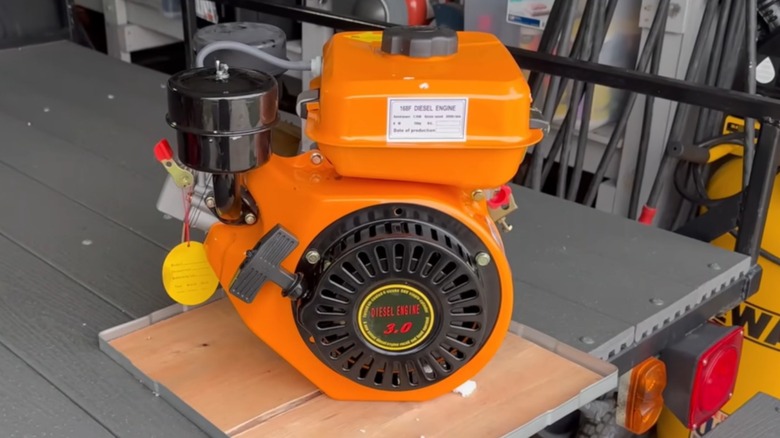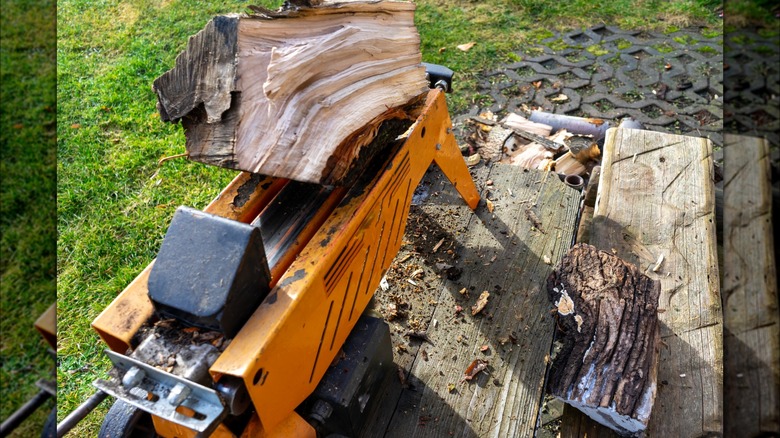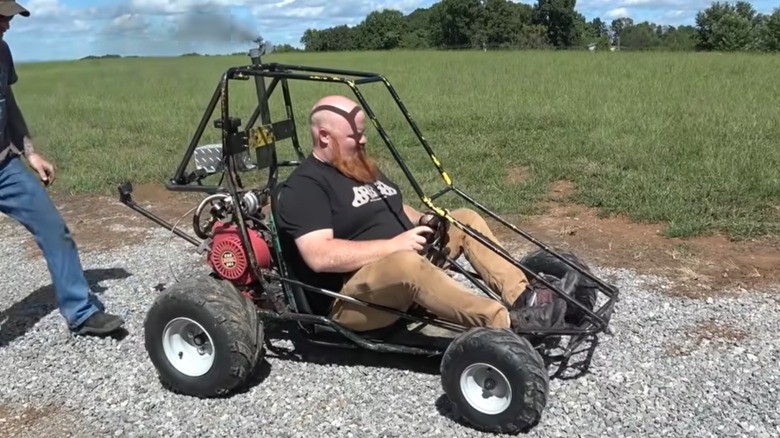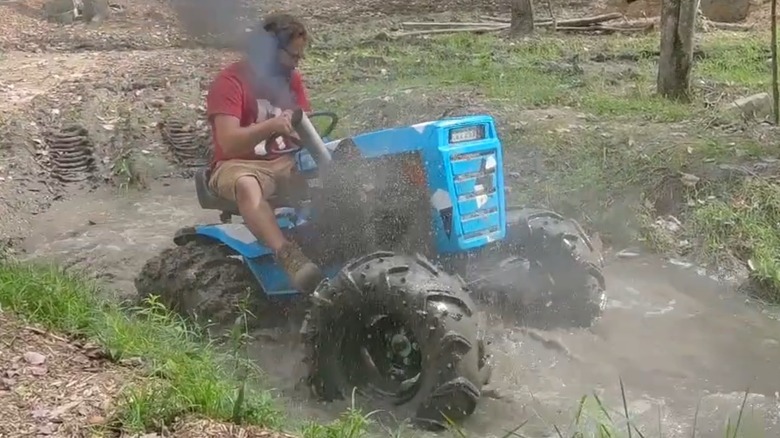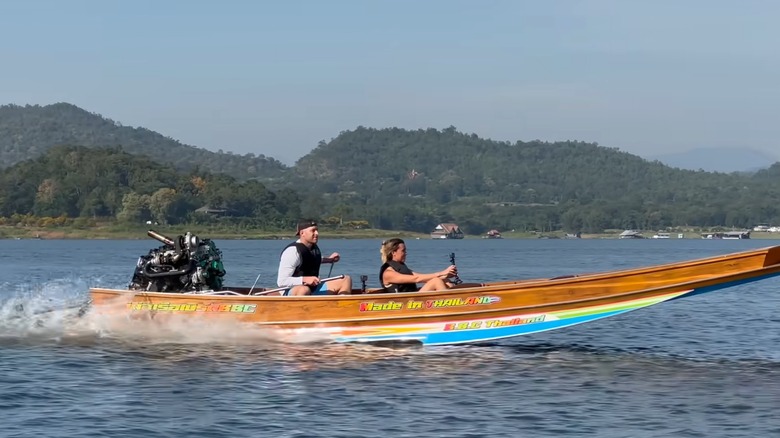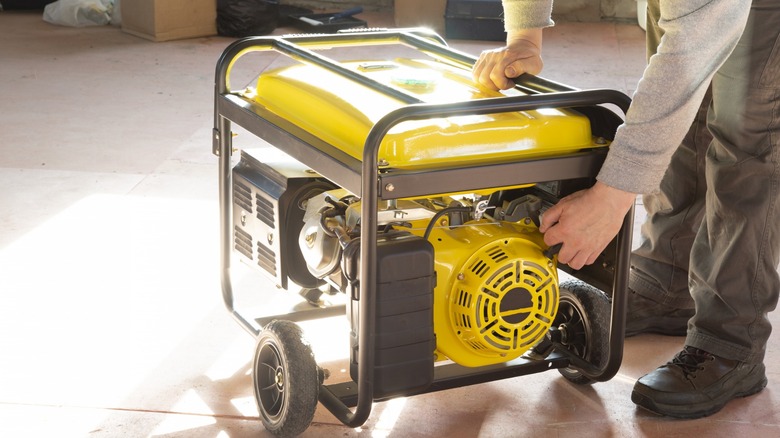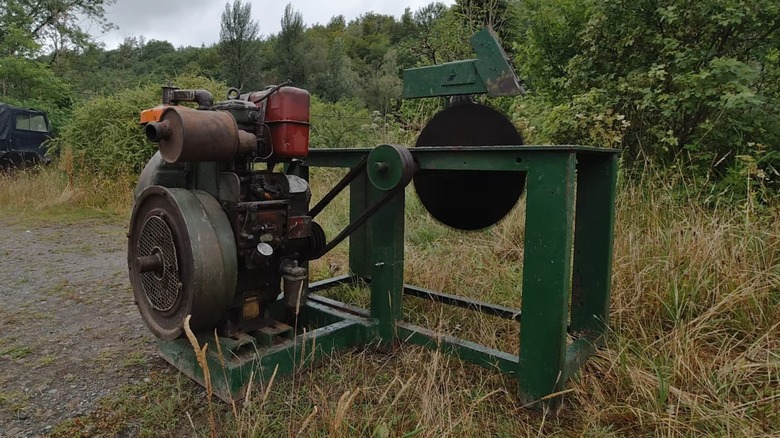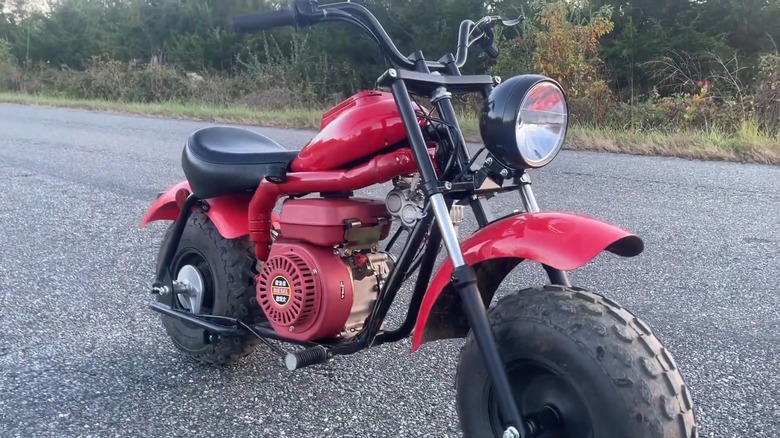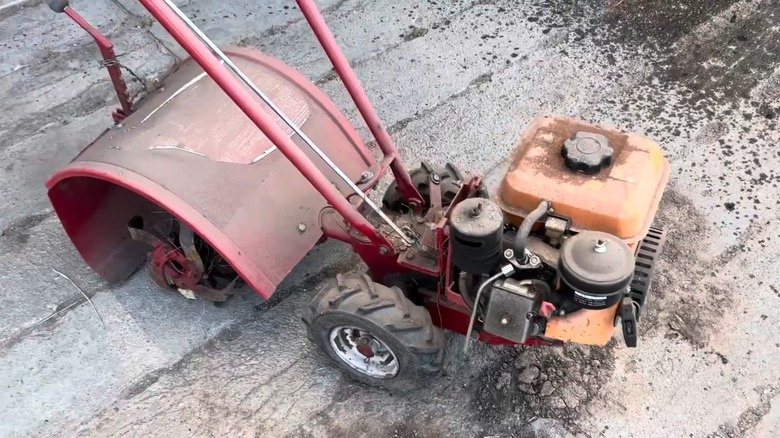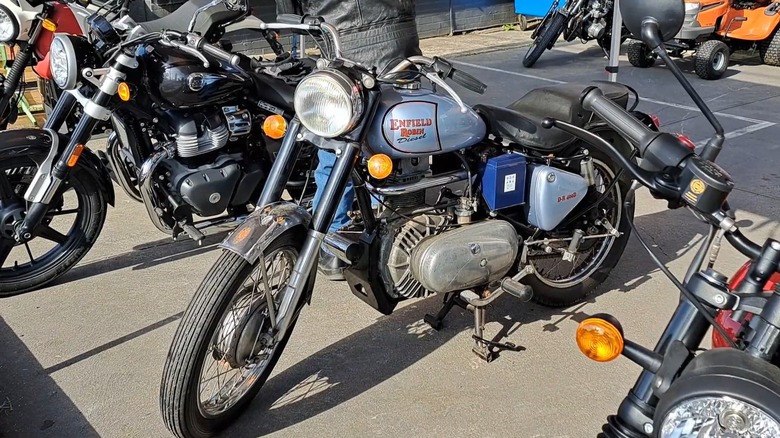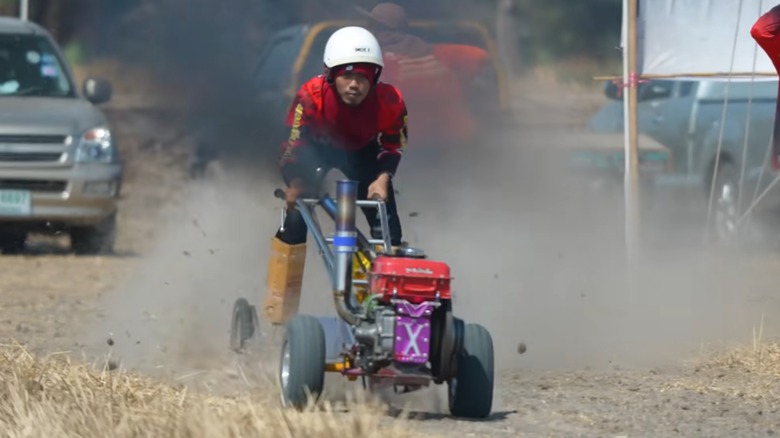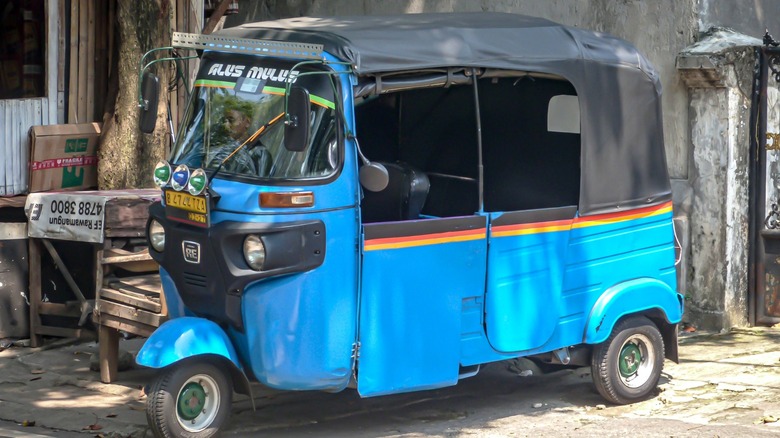11 Of The Best Ways You Can Use A Small Diesel Engine
Diesel engines help us accomplish a myriad of tasks every day. While it is true that diesel engines are more efficient than gasoline engines and have a high torque output, a higher initial cost can often make them impractical. However, when applications call for high torque at low speeds, the higher cost is justified. These applications arise when heavy duty work needs to be done, such as hauling large quantities of heavy freight. While diesel engines are well suited for powering large machinery and hauling, they are also built on a much smaller scale.
Diesel engines as small as 211cc come from manufacturers such as Bison, Yanmar, and Kubota. These can be seen in a variety of specific applications, but recently an influx of small diesel options have shown up on Amazon with prices as low as $160 for a fully functioning single-cylinder diesel engine delivered right to your doorstep.
While small diesel engines in vehicles and machinery represent a small portion of the market, DIY projects using cheap imported engines are increasingly popular these days. Looking at a mix of production models and clever project builds, here is an exploration of 11 of the best ways to use a small diesel engine.
Log splitter
Perhaps you felled a bunch of timber on your back 40 and have it chopped down into logs that need splitting for firewood. Of course, you could grab an ax, remove your shirt, position your tripod, and get to swinging on some firewood for the perfect Instagram post for all the ladies. However, in the real world, most of us lack the strength and body to accomplish either of those things — that's why we have log splitters.
A log splitter is a fast and efficient way to reduce chunks of trees into stacks of firewood. Using either mechanical or hydraulic action, a log can be pushed through a crossed blade and cut into four pieces perfect for burning. Giant commercial versions of these are available and can cost $75,000 for big diesel hydraulic units, although smaller versions for consumers also exist. However, even small gas-powered units at Home Depot or Tractor Supply can still cost $1,000. Therefore, a lot of creative people make their own, and the high torque output of a small diesel can be the perfect power source.
YouTube hosts a range of videos of people using smaller log splitters either upgraded with a diesel engine or completely homemade. Engine choices include a diesel Kubota 2-cylinder and cheap imported single-cylinder diesels, and most of them look to be working setups.
Go-kart
Go-kart building has long been the domain of irreverent tinkerers both young and old looking for ways to make their machines go faster. Most often powered by small engines like those on outdoor power equipment, go-karts usually have less than 10 horsepower, although there are plenty of websites offering more powerful go-kart engines and custom parts. They are also simple and easy to work on, and that gives people a wide berth to change them in whatever creative ways they can think of. This is likely why you can find multiple YouTube channels modifying go-karts with small diesel engines, often with amusing results.
If you are having trouble coming up with reasons why you would want to choose diesel power for a go-kart, you are on the right path. There is no appreciable advantage to swapping gas for diesel. To attain top speed, go-karts rely on high RPMs from an engine that is typically installed as direct drive with a single gear. Diesel engines run at much lower speeds. The increased torque may be helpful for pulling off the line, but go-karts are so light that any advantage is negligible.
Disregarding practicality, installing a diesel engine makes for a fun project, and many people doing these conversions then add small turbochargers to boost power and create wild go-kart projects that can end up being terrifyingly fast. Still, even without doing complex modifications, simply installing a cheap diesel can make for a fun kart with plenty of torque.
Lawn mower
One of the most common small engines most people have in their home is with the one in their lawn mower. Most people use mowers powered by small gasoline engines from Briggs & Stratton, Kohler, or Kawasaki.
Brand new diesel mowers are available from a range of manufacturers. John Deere offers its X750 with a three-cylinder diesel engine for $15,259, and Bad Boy offers a diesel zero-turn model advertising payments of $347.44, which is about the same as a car payment. These are expensive machines to buy new and only a handful of them can be found on the used market. This means that if you want a diesel riding mower at an affordable price, you will probably have to do it yourself.
For inspiration, there are already countless videos of maniacs making diesel riding mowers for no other reason than the fact that they can, although they likely perform well. Diesel riders can go a couple of ways. For instance, installing a cheap small diesel in place of an original engine that has blown can create a more efficient version of the original machine. However, more daring mechanics might go for making a diesel mud mower, which is a riding mower converted for romping off-road and possibly entering into backwoods mower races through the swamp. Diesel power is good for this application and the resulting machine is clearly a whole lot of fun.
Outboard boat engine
Diesel fuel moves a significant portion of the vessels on water around the world. Yachts, fishing boats, ferries, and dozens of other types of boat use giant diesel engines for motivation. However, small boats often use gasoline power, with companies like Mercury Marine — the same company that manufactured the 1990 Corvette ZR1 V8 engine – and Volvo Penta providing power for smaller fishing and leisure boats all over. For the smallest boats with an outboard engine, small two-strokes engines are common. However, that does not mean nobody can use a diesel for a small outboard. It might even be a good use considering the power and efficiency offered.
Small diesel engines can and do power boats. Historically, many smaller boats came with low power single-cylinder diesels such as those from Saab or Volvo that can run at a slow but constant pace for hours on end. A search of YouTube may result in some videos of boaters using the cheap imported engines, but they do not appear to be as popular as other applications, such as go-karts.
If you consider a small diesel engine to also include the typical four-cylinder found in cars and small trucks, people in Thailand have used them at a completely different level in their long tail boats. These long tail riverboats, which have long been a part of Thai culture for centuries, are now being modified with a variety of diesel engines by Isuzu or Toyota, for example. These diesels are built up, often with turbochargers, propelling these little boats to incredible speeds.
Portable generator
Portable and stationary generators are both available using gasoline, diesel, natural gas, or propane fuel. Gasoline is the most commonly used fuel for portable generators while emergency power stations — such as those used for hospital backup power — are often diesel units. Diesel fuel is ideal for generator usage because it is more efficient and creates fewer emissions but also creates more noise than an equivalent gasoline-powered unit.
You can buy small diesel generators off the shelf, but they are much more expensive than a gasoline equivalent. For example, a 3,700-watt unit from Yanmar with a 5.8-horsepower diesel engine will cost you about $4,000, while a comparable gasoline unit from the same vendor comes in at $2,290. For most people who use a generator infrequently, gasoline is probably the way to go. However, for the people who never learned to color inside the lines, a homemade diesel generator is an option.
Using a diesel engine from Amazon or eBay, which can be bought for $200 to $400, an old generator can be upgraded to diesel or those with a bit of knowledge can build a generator from scratch.
Power saw
Cutting timber down and processing it into lumber usable for building is a back-breaking task humans have had to contend with for millenia. Thankfully, it is also a task that has been significantly improved over time by technology. The introduction and later improvements of metallurgy and manufacturing made it easier and more efficient to cut wood, but the modern age and its internal combustion engines had the most dramatic impact, making the work far easier, faster, and most importantly, scalable.
Petroleum-powered engines are ubiquitous in areas of forest thick with logging operations as well as lumber processing facilities and construction sites elsewhere. Perhaps the most common engine-driven saw is the chainsaw, which uses a two-stroke gasoline engine to produce its excellent power-to-weight ratio. However, much larger industrial saws exist with various power sources from electricity, gasoline, or diesel. Furthermore, diesel power is commonly used for concrete saws used in building and roadway construction, typically on walk-behind units.
Aside from highly expensive specialized commercial machinery, some small diesel saws exist. A couple of diesel chainsaws were manufactured years ago. Jonsered and Comet, both of Sweden, made saws running on diesel fuel probably in the 1950s , although their power output likely pales in comparison to the most powerful chainsaws available today.
Minibike
One of the hallmarks of a good childhood includes a first ride on a minibike. Whether it is one you owned or one belonging to a friend, the experience was always a blast. These little playthings likely trace their history back to the late '40s and the Hiawatha Doodlebug, which was marketed for transportation but turned out to be unsafe for the streets. Since then, pint-sized two-wheelers made with a wide variety of engines and frames have terrorized suburban neighborhoods everywhere.
Many of the cheaper models and basic models like the vintage Taco or more recent Coleman are not much more than a frame with an engine used in lawn equipment like a garden tiller. These have been popular for many years and sometimes become victims of YouTube channels that like to push the boundaries of good taste. Sometimes this includes diesel power.
Honestly, there is no practical reason to put a diesel engine on a minibike. This is something done purely for the enjoyment of tinkering on something different. Minibikes are incredibly light, making any torque or efficiency advantage coming from a diesel a bit pointless. However, having fun is the point of these kinds of projects. There are dozens of diesel minibike projects on YouTube from basic yet well-executed custom jobs to more intense versions like a supercharged diesel Coleman bike.
Tiller
Many jobs humans have done forever are made easier with internal combustion engines. For instance, tilling fields has long been accomplished using heavy tools or with the help of beasts of burden like horses and oxen. The modern era has made these jobs exponentially easier, and now tilling a field or a small garden is a breeze using a gas or diesel powered tiller.
Most consumer versions of tillers come with small gasoline engines while diesel power is reserved for much larger agricultural machines. However, with the proliferation of small and affordable diesel engines, any type of tiller can be an oil burner. Some slightly larger models for farming come from the factory with small diesel engines while small machines used for home gardens can be adapted yourself. More importantly, any job in the yard or field for which a machine exists can now affordably be powered by diesel fuel.
Motorcycle
Unlike a minibike, a motorcycle is made for legal highway driving. Furthermore, diesel powered motorcycles are exceedingly rare, but do exist. The lack of models equipped with diesel power goes to the equation in which cost exceeds the need for torque, especially since diesel engines are naturally heavier. There are few benefits of a diesel motorcycle, but exceptions lie in very narrow categories.
One extremely limited production diesel motorcycle came in 2004 as a kind of pilot program for the Department of Defense. As part of its practice of having all vehicles run on a single fuel, no motorcycles were available for military service. Therefore, Hayes Diversified Technologies was contracted to significantly modify and produce military spec versions of the Kawasaki KLR650, using the original lower engine case and lots of custom parts on top to make it run on JP-8. About 500 were built.
The other exception comes from India, where motorcycle manufacturer Royal Enfield — a company whose history dates back to Victorian England – built a diesel motorcycle meant for extreme fuel economy. Sometime around 1990, a version of the classic Royal Enfield Bullet came with an small Italian industrial diesel engine good for only 6.5 horsepower. The resulting bike, which was called the Taurus, was incredibly slow but said to achieve about 200 mpg, thus saving tons of money at the pump.
Rice tractor racing
Truth be told, if you are not from Southeast Asia, you've likely never heard of a rice tractor, which are affectionately called Iron Buffalos in Thailand. The name is derived from the traditional plows used in the rice fields pulled by water buffalo for centuries. With the modern era came an update in technology and diesel rice tractors became a thing.
The motorized plows consist of an engine, either gas or diesel, turning the wheel of the contraption with the plow in front and the operator riding a separate platform on wheels towed behind the tractor. It is a simple yet elegant solution to working in the water-logged fields. However, as is so often is the case, field hands at some point took to racing their tractors and eventually turned it into a full-fledged sport in rural Thailand.
Few foreigners ever get to see this spectacle, but those that do are treated to quite an event. With heavily modified rice tractors, often powered with diesel and turbodiesel engines, they drag race these things at what looks like ludicrously fast and dangerous speeds wearing minimal safety equipment. It looks like it is fun to watch but terrifying to participate.
Mass transit
In India, a few manufacturers build a vehicle that is as ubiquitous on the roads in that country as the Ford F-150 is in the States — the auto rickshaw, also known as a tuk-tuk. These tiny three-wheelers serve as cargo haulers and taxicabs all over the country with power coming from engines originally developed for scooters. They only carry a few passengers at a time but are small enough to zip in and out of traffic and hopefully arrive safely at your destination, provided no highways are on the route.
Bajaj manufactures a few of these models with options in gasoline and CNG engines for its base models while the larger higher capacity Bajaj Maxima -– it still only has seating for three passengers but with room for luggage –- which is powered by a 470cc single-cylinder diesel engine. With just under 10 horsepower, it will not take you anywhere fast, but it will probably take you there. Just be sure to hold on tight for the ride.
